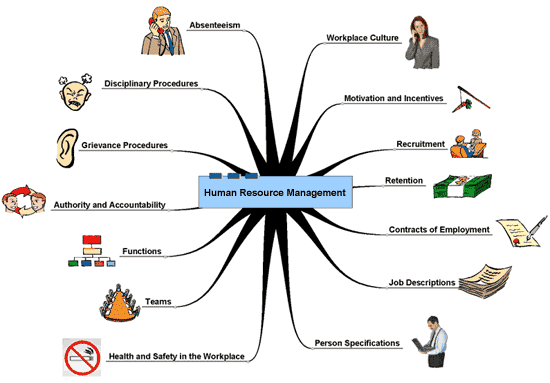What are the functions of Human Resource Management?
Human Resource Management (HRM) is a critical function within an organization that is responsible for managing the organization’s most valuable assets- its people. Here are some of the key functions of HRM:
- Recruitment and Selection: This function involves attracting, identifying, and selecting the most suitable candidates to fill vacant positions within the organization. This process may include job analysis, writing job descriptions, advertising vacancies, screening resumes, conducting interviews, and administering tests.
- Training and Development: HRM is responsible for providing training and development programs to help employees enhance their skills and knowledge. This function includes identifying training needs, designing and delivering training programs, evaluating their effectiveness, and ensuring that employees are competent to perform their jobs.
- Performance Management: This function involves setting performance standards and measuring employee performance against these standards. HRM is responsible for providing feedback, identifying areas of improvement, and ensuring that employees receive recognition and rewards for their contributions.
- Compensation and Benefits: HRM is responsible for developing and administering compensation and benefit programs that are competitive and equitable. This function includes designing pay structures, administering employee benefits such as health insurance, retirement plans, and paid time off.
- Employee Relations: HRM is responsible for managing the relationship between the organization and its employees. This function includes developing and implementing policies and procedures that promote employee satisfaction, managing employee grievances, and ensuring compliance with labor laws and regulations.
- Compliance with Legal and Ethical Standards: HRM is responsible for ensuring that the organization complies with legal and ethical standards in all its HRM practices. This function includes ensuring that the organization’s HR policies and practices are in compliance with labor laws, regulations, and ethical standards.
Overall, HRM plays a vital role in managing an organization’s human resources effectively, which is crucial for the organization’s success.
In order to achieve the objectives of human resource management, a variety of functions are performed. These functions can be categorized into two groups
Managerial Function
Managerial functions primarily involve basic management functions such as
- Planning: Planning involves activities with an objective to achieve organisational goals
- Organizing: Organizing involves development of organizational structure by allocating duties and delegating responsibilities to individuals as and when required.
- Staffing: Staffing involves hiring the right quality of people in the right number and at the right time.
- Directing: The process of directing involves effectively implementing the formulated plan to achieve the organisational objectives.
- Controlling: The process of controlling involves keeping a track of whether a plan has been implemented as required and conducting performance evaluation activities.
Operative Function
Operative functions primarily deal with employment, growth, maintenance and employee compensation. Following are some of the operative function related to human resource department
- Human Resource Planning: Maintaining an adequate pool of talented workforce
- Recruitment and Selection: Searching suitable candidate and opting the best
- Placement and Induction: Placing the candidate in the right type of job and familiarizing them with the work environment.
- Training and Development: Providing relevant training as per the job requirement
- Employee Compensation: Remunerating the employees for their service
- Performance Appraisal: Evaluating employees performance for appraisal
- Employees health and safety: Clean and safe working conditions for employees
- Motivating employees: Inspiring employees to contribute towards organisational goals
- Grievance Redressal: Addressing the problem and grievances of employees
Certify and Increase Opportunity.
Be
Govt. Certified Human Resources Manager
Practice Questions
Q1. Which function of HRM involves attracting and hiring qualified candidates for job openings?
A) Training and development
B) Recruitment and selection
C) Performance management
D) Compensation and benefits
Correct Answer: B) Recruitment and selection
Q2. Which function of HRM involves identifying and addressing employee performance issues?
A) Training and development
B) Recruitment and selection
C) Performance management
D) Compensation and benefits
Correct Answer: C) Performance management
Q3. Which function of HRM involves providing employees with competitive pay and benefits packages?
A) Training and development
B) Recruitment and selection
C) Performance management
D) Compensation and benefits
Correct Answer: D) Compensation and benefits
Q4. Which function of HRM involves managing employee relations and resolving conflicts?
A) Training and development
B) Recruitment and selection
C) Performance management
D) Employee relations
Correct Answer: D) Employee relations
Q5. Which function of HRM involves ensuring compliance with labor laws and regulations?
A) Safety and health management
B) Organizational development
C) HR information systems
D) Legal compliance
Correct Answer: D) Legal compliance



